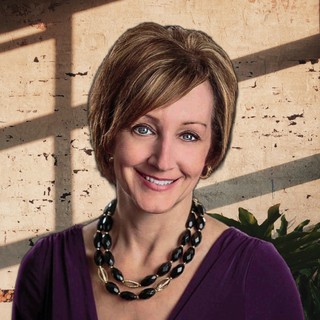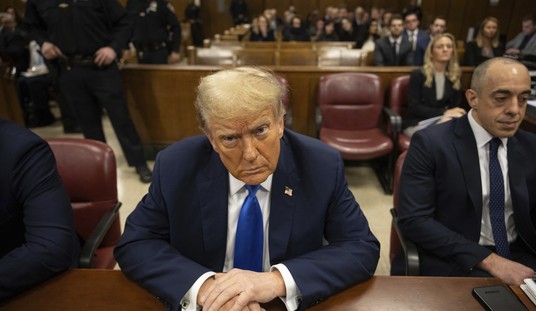“Arming teachers” with guns is a subject often fraught with emotion and one that can divide communities into different “camps” — usually into the stereotypical left vs. right, NRA vs. gun-control arguments. But the issue is much more complex and nuanced, and even those usually on the same side of the gun-control debate disagree about whether teachers should carry guns in classrooms.
Ohio is no exception as the state grapples with school safety a year after T.J. Lane killed three classmates and paralyzed another in a shooting at Chardon High School.
Twenty-two seconds from the time he shot the first shot until he left the school building. Twenty-two seconds.
That’s how Superintendent Joseph Bergant described the shooting at Chardon High School. He spoke at an Ohio State Board of Education (SBE) meeting recently and said that Lane fired the first shot through his backpack and killed the student next to him.
“How do you guarantee the safety of 3000 students in a school building?,” Bergant asked. “You can’t.”
The Chardon district had a comprehensive plan for what to do in the event of an active shooter. They practiced so that students, parents, and teachers knew exactly how to respond. That training included role playing — even discharging a firearm in the building — practice reunification with parents, and parents receiving text messages to make sure the notification system was operational.
Bergant said, “Teachers had more anxiety when we did the crisis drill than on the day of the shooting.”
Despite all the preparations, the shooting only ended as quickly as it did because of the heroic actions of teacher and football coach Frank Hall, who risked his own life by charging Lane — while dodging bullets — and chasing him out of the building.
Metal detectors. Uniformed police officers (euphemistically called “school resource officers”), buzzer systems at the school entry, armed teachers, brave and burly football coaches, duck and cover drills. No single solution or combination of protective measures will guarantee the safety of children when there is an evil murderer bent on snuffing out human lives. Arming teachers is not “the” answer to preventing — or stopping — active shooters.
But are they one solution that could help to make kids safer? Are there legitimate safety concerns about arming teachers? And who should decide if teachers should be armed with guns in schools?
State Senator Frank LaRose (R-Copley) is chairman of the Ohio Senate Public Safety Committee, which held hearings earlier this year on school safety. He’s also an Army veteran who served on a special forces team. He told the SBE that arming teachers is not something he would support:
I am someone that has the unique perspective of working in a profession where I carried a firearm for a number of years and I’ve seen what happens when the heat is on. When the stress level are high and even the best trained in the world have accuracy as well as target identification issues. This is a heavy responsibility to carry a deadly implement and it’s really something that should only be trusted to the most skilled and trained sworn law enforcement officers.
He added that a unique situation like the one in Orrville High School in his district, with an armed teacher who is a trained law enforcement officer “may be an example where there could be an exception.”
Orrville is a tight-knit, idyllic community in Wayne County, Ohio. It’s the home of Smucker’s — “With a name like Smuckers, it has to be good!” — a small town that is in many ways not unlike Chardon. The Orrville Board of Education recently voted to allow a teacher, who is a part time law enforcement officer, to carry a concealed handgun at the high school.
Wayne County prosecutor Dan Lutz, himself a veteran with four years in the Judge Advocate General’s (aka “JAG”) Corps of the U.S. Navy, advised the Orrville district and recommended they allow the teacher to carry his concealed handgun. Lutz, also a Republican, disagreed with LaRose’s assessment:
“Obviously, the fine motor skills go out the window when someone is under significant stress. Obviously law enforcement and the military hope that their training will overcome that and allow them to function. If you take [Sen. LaRose’s] arguments to the extreme and he says it even affects those that are professional military trained, then they shouldn’t carry a gun either because it affects them, too.” Lutz added that, “You can take that argument to its logical absurdity because the stress would affect everybody, whether they’re trained in the military or law enforcement trained.”
He said the benefits outweighed the potential risks: “I think the advantages of having teachers armed to stop the potential future slaughter of our children outweigh that.” Lutz said that some additional training might be beneficial for added safety:
I’m not opposed to saying it’s a requirement that teachers have to go through significant — when I say significant — like maybe a multi-day training more so than a concealed weapon training. … That just increases the ability of the teacher to make a difference should a gunman come into a school and increases safety, too.
I spoke to Sen. LaRose about the issue of arming teachers. He explained that while he supports the right to concealed carry and is a concealed carry permit holder himself, it’s a different matter to have a policy that encourages teachers, as a part of their “official duty,” to carry firearms:
It’s not that I’m against it or crusading against teachers having the ability to defend themselves in the local school district if the teachers in question want to make that decision, but as far as a thoughtful conversation about how to make our schools safer in a macro sense, when we pass legislation that pertains to the whole state, there are a lot of other things we can look at that are a lot more effective than this notion.
He said that based on the consensus of the experts they heard from in the Senate hearings, things like building security, improving police response time, teacher training, anti-bullying programs, and mental health screenings would all be better ways to make schools safer.
Asked how a teacher with a concealed firearm in a school was different than a teacher walking down Main Street with a concealed firearm, LaRose again cited the stress of an active shooter situation.
I’ve been trained to make life or death, split-second decisions, as we used to call it in a tactical scenario, the “shoot and don’t shoot” scenarios. That’s a weighty decision and people spend their entire careers training to prepare for those kind of decisions. In a highly sensitive environment like a school where you’ve got hundreds and in some cases thousands of young children — which as far as I’m concerned are the most precious and vulnerable members of our society — they deserve all the protection we can try to muster for them.
LaRose doesn’t think teachers should be expected to make decisions like that when “mistakes can be made.”
He reiterated that he didn’t want a statewide mandate “that resulted in more teachers being armed” and preferred to focus on other solutions.
A recent article at PJM fairly debunked the myth that teachers pose more of a risk than other armed citizens, concluding that,
Involving the government in the application of a fundamental human right never enhances freedom or safety… Teachers are more than intelligent enough to choose appropriate, effective, and concealable handguns, and to carry and use them properly. Millions of less-educated citizens do as much every day without expensive and time-consuming governmental mandates.
Lutz thinks that schools are more dangerous because of the overly sensitive gun bans:
I think it’s proving itself over and over again, the most dangerous place to be in these shootings is a gun-free zone. It’s a wrong-headed notion of what’s going to protect our children. They’re taking it to the point where it’s actually endangered our children as opposed to kept them safe. They are a target because there’s no deterrent. If someone wants to target children they know they are going into that situation in safety, so to speak, because they’re going to know no one’s armed.
Again, this is a complex issue with many nuances and it’s obvious that even those usually on the same “team” disagree about the best way to protect children in schools.
Perhaps the most important element in this discussion is that this is a local control issue.
Joseph Bergant, superintendent of the Chardon school district, expressed strong feelings at the board meeting, saying “absolutely not” to armed teachers in his schools. But he added, “I believe 200% in local control.”
Ohio Attorney General Mike DeWine echoed Bergant’s sentiments about local control and told the SBE,
When I’m asked about arming people in schools my answer is that’s a local school board decision. That’s not Mike DeWine’s decision. A lot of it depends on what the community wants to accept.
However, despite DeWine’s strong statement that this is a local decision, he tempered it by saying that any teacher carrying a gun would need specialized training:
You better be sure that person has extensive training in law enforcement. Maybe an ex-police officer who is now a teacher. Maybe an ex-someone who is out of the military who is now a teacher. You better make sure they’ve got the training and you better make sure the training is up to date. I would never put someone in a school who just had a minimum amount of training or experience with a gun. I never would do it.
I spoke with State Board of Education member Bryan Williams, whose District 5 covers several counties in north central Ohio, including Wayne County. He also believes in local control. He said the State Board of Education and the state legislature should not be in the position of taking options off the table by making state-wide policies:
Ultimately, the local community has to pay for the solution and they have to live with the benefit or the failure of the solution, so I think they should get to decide the approach. If they want to pay and have an armed guard at every door, if they want to put metal detectors in, if they want to let teachers who are licensed to carry … the people at the building level are going to know their staff, their buildings, and their communities better than any statewide prescribed solution.
Exactly.
This should be the starting point and prevailing theme in discussion about arming teachers — and all education policy, for that matter.
It’s worth repeating:
The local community has to pay for the solution and they have to live with the benefit or the failure of the solution.












Join the conversation as a VIP Member